Karnataka Chapter
15 - 19 Sep 2022
CompletedOverview
Karnataka Chapter brings to you 14 magnificent temples, in 3 different cultural regions, over 4 days.
Sūtradhāra - Your Temple Expert

Pankaj Saxena
Pankaj is an author on Hindu temples, arts, literature, history and culture. His writing explains the beauty of Sanātana Dharma through stories about traditions, communities and culture. He has a deep interest in cultural anthropology, evolutionary biology and ecology, and has visited more than 1600 Hindu temples.
Interested in this chapter?
We do not plan to repeat previously completed chapters in the near future. However, if you have a group of 15–20 interested individuals who'd love to explore this chapter, do write to us. We'd be happy to create a special on-demand Anveṣī experience just for your group.
Glimpses from the Chapter
Photos


Temples Covered
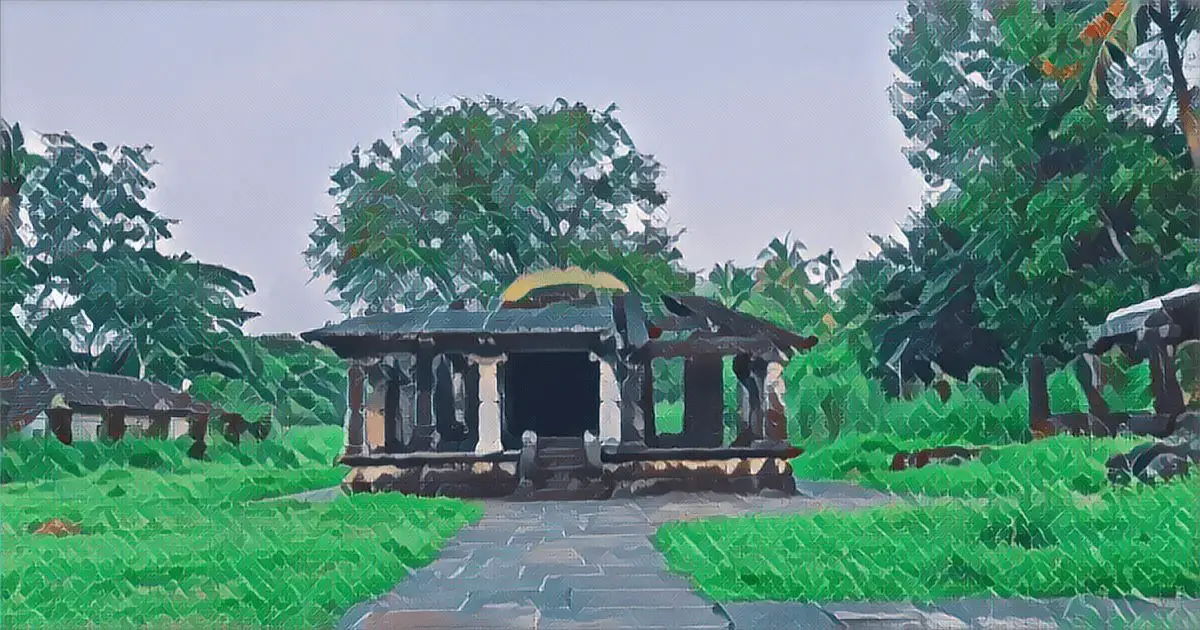
Kattale Basadi
Kattale Basadi is a small campus with two Jain Basadis, and three temples in the same complex. Kattale means dark and the Basadi is called Kattale Basadi because of its unique design. The Basadis are totally covered with stone walls and roof on all sides, except one tiny entrance, the only source of light. The entrance faces south and has some carvings to its side. One can take a look inside the Basadi from outside. There are no deities inside at present. Kattale Basadi complex has 3 temples and some more ruins. One temple is dedicated to Jain Tīrthaṇkara while other two are dedicated to Śiva and Viṣṇu.
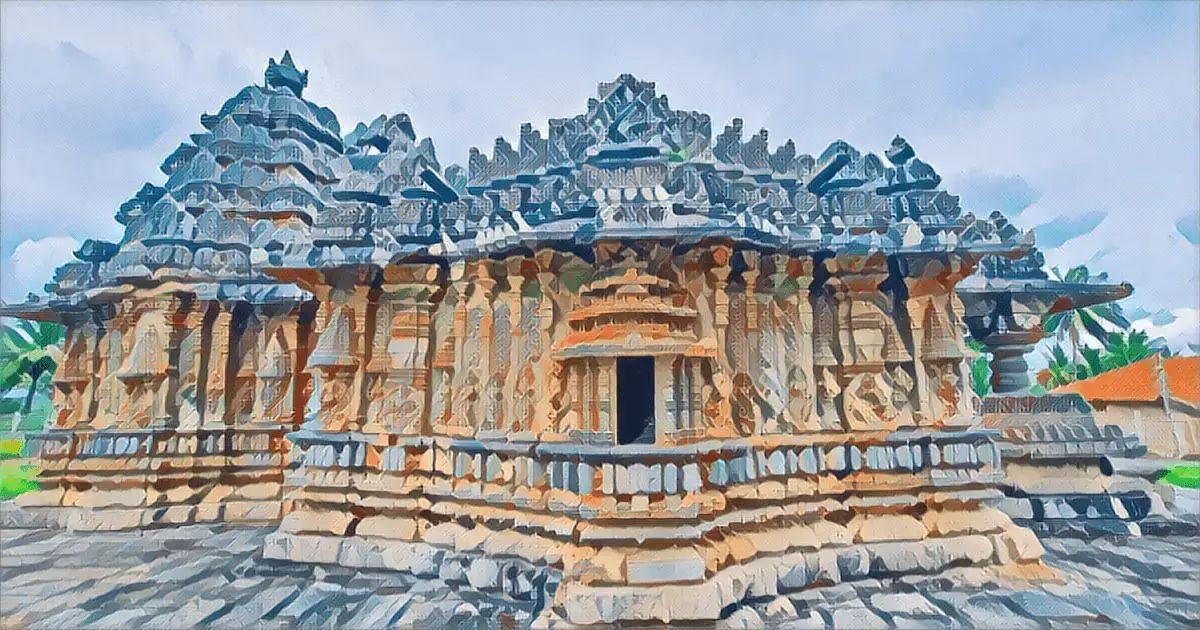
Nageshvara-Chennakeshava Temple complex, Mosale
This is a twin temple complex like no other. The two temples are completely detached but built on the same platform. They have their own manḍapas and are almost completely identical to each other in form and structure, with the only difference in the deity to which they are dedicated to. While one temple is dedicated to Śiva, the other is dedicated to Viṣṇu. As a result the deities displayed on all the deva-koṣthas are also different. The twin temples are perfect as the kalaśa at the top of both of them are completely intact making them the most perfect sight of all the Hoysala temples.

Panchalingenshvara, Barkur
This temple is one of the most famous and unique of all temples in Barkur. Barkur is one of the most important temple towns of coastal Karnataka. It is said that there are 365 ancient temples here, one for each day. Every few metres, is an ancient temple though many have changed over the centuries. The temple is famous because of its unique two storeyed garbha-gṛha. It has a unique apsidal shape which is called apsidal in architectural terminology. The two storeys have different tile roofing and there is a wooden lattice pradakṣiṇā patha around the stone garbha-gṛha. The temple legend goes that the vigrahas from Kashi were delayed and so the priests installed five stones from local quarry in the garbha-gṛha.
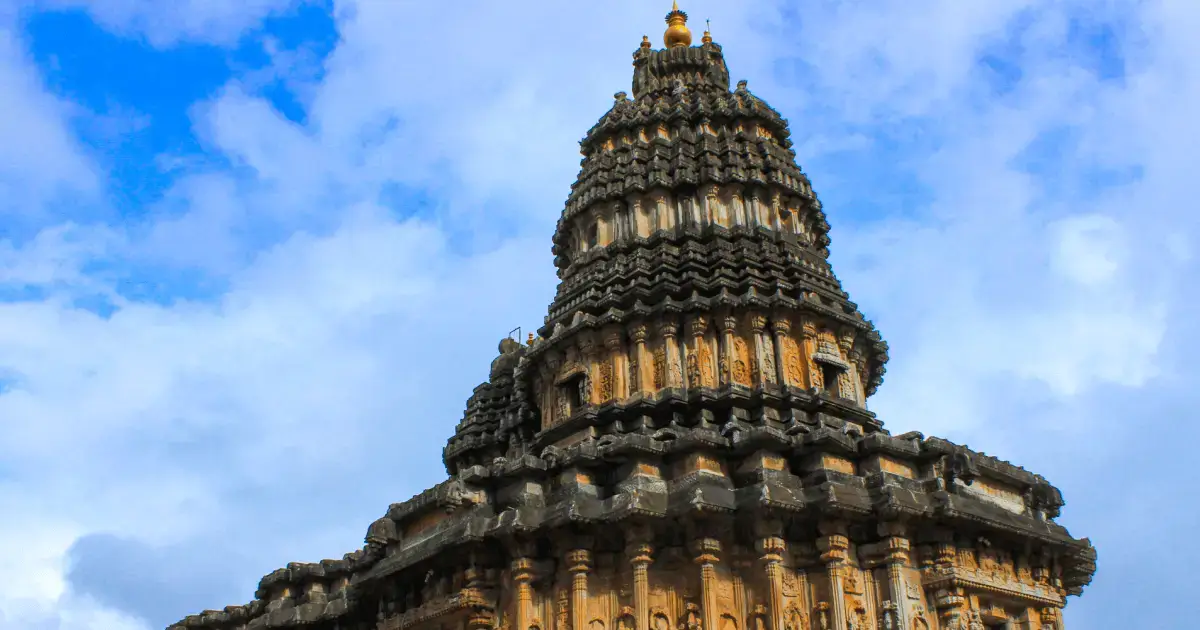
Shri Sharada Matha, Sringeri
Sringeri is the Peetha of the south, one of the four traditional Shankaracharya Mathas in India. And it is a wonder in every sense of the word. It sports the ancient Vidyaranya Temple on the banks of the pristine river Tunga, along with many other temples. The Matha premises are huge and sport tropical rain forests, areca nut plantations, coconut trees and rice paddies. And right through the middle of the Matha flows the river Tunga. On one side of the river lie most of the temples and on the other side is the Shankaracharya nivāsa. The two sides are connected by a footover bridge. Nature is protected here and you can find elephants, deer and dogs roaming around and mixing freely with humans while students in traditional attire study under trees from great masters. That is the wonder that is Sringeri.

Sri Krishna Matha, Udupi
Sri Krishna Matha, Udupi, is one of the most ancient of the Krishna temples of the Madhva sampradāya. The temple was founded by Shri Madhvacharya himself in the 13th century and is one of the most famous and important Dvaita Matha to exist anywhere in India. Shri Madhvacharya had found the vigraha of Shri Krishna and ever since then it has been worshipped here. Nothing in the Matha has changed in the past 800 years in the way in which the worship is offered. The garbha-gṛha still does not use electric lights and worship is offered in the light of the dīpamas. The temple celebrates many festivals including a float festival in its temple tank. Almost every evening there is a musical performance offered to the deity.

Jain Temple
These Jain temples are three in number and dedicated to the Jain tīrthaṇkars Parshvanatha, Shantinatha and Adinatha. They are very unlike other Hoysala temples as their exteriors are not ornate at all and sometimes just plain walls with very simple motifs. However, the vigṛhas of the tīrthaṇkars are huge and finely sculpted. These temples were also built during the late 12th to early 13 centuries and were destroyed during the Islamic invasion of south India by the Delhi Sultans.
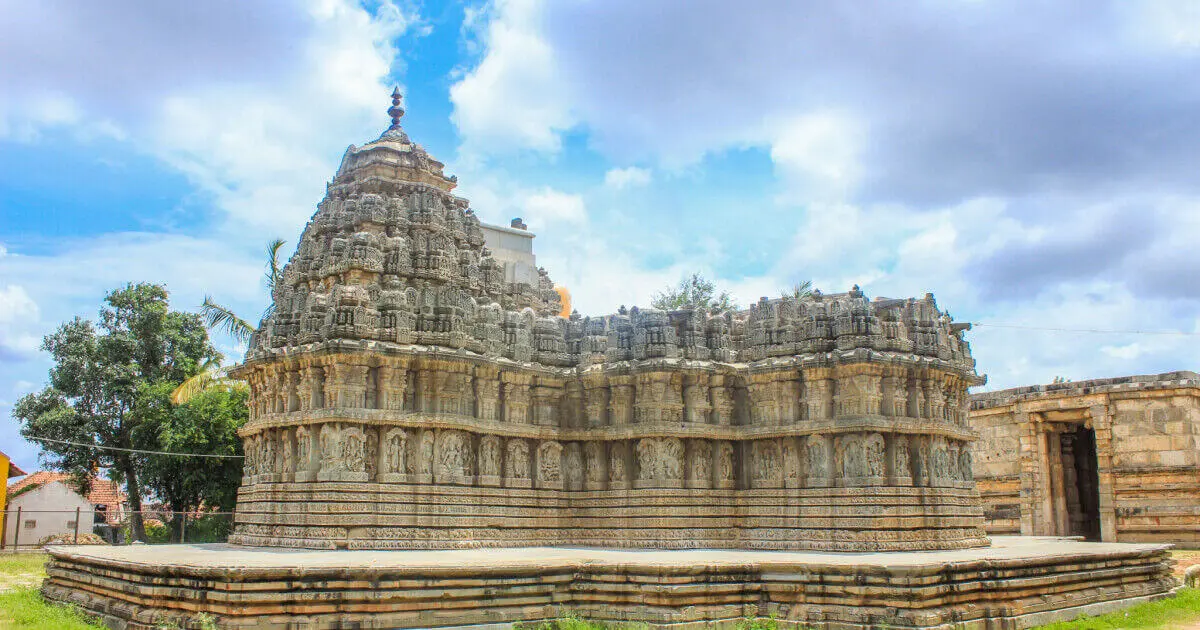
Lakshmi Narasimha, Javagal
Another great Hoysala trikūṭa, this temple has a closed common manḍapa with three garbha-gṛhas dedicated to Lakshminarasimha, Sridhara and Venugopala respectively. Although this temple is also built in soap stone, it is of a different tone and hue which after weathering of around 800 years has turned almost completely chalk white. As a result it has a unique appearance of all the Hoysala temples. But the most important feature of this temple is that its walls are very low and thus the deva-koṣthas featuring the most famous aspect of Hoysala temples – its beautifully sculpted images of the deities – are completely at a human level and one can marvel at them and study their features as if one would look at another human being.
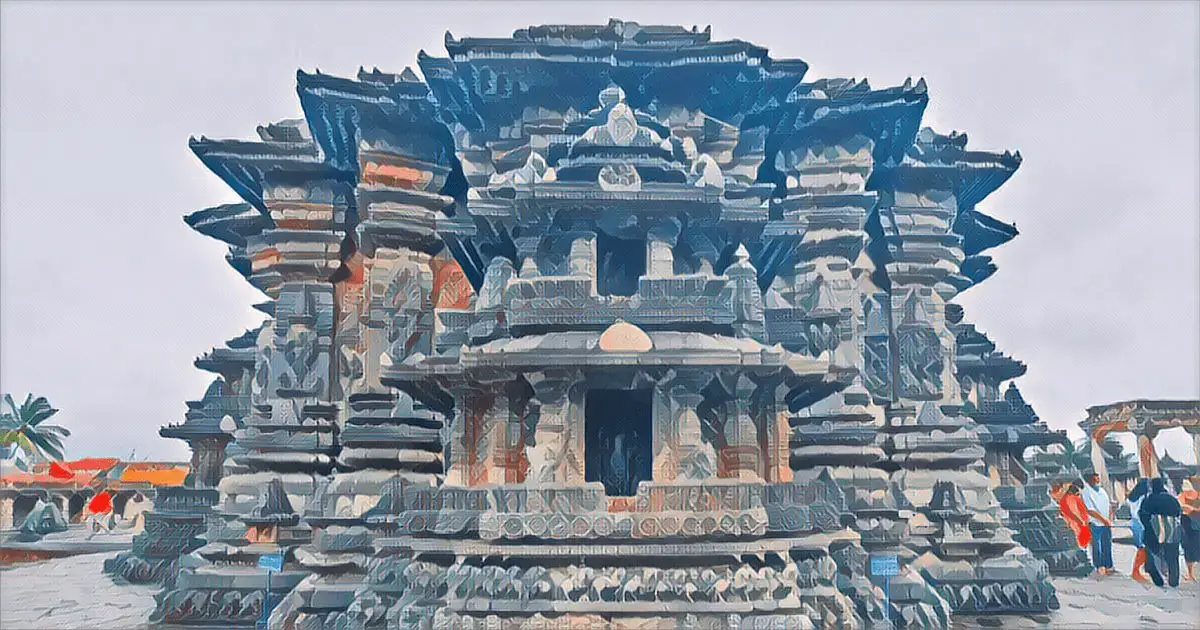
Chennakeshava Temple, Belur
Chennakeshava Temple is one of the largest and the most famous temples ever built by the Hoysala dynasty. It is also one of the most ornate, with its sculpture, mainly its madanikās, famous all over the world. It was built by King Vishnuvardhana in 1117 CE, on the banks of the Yagachi River in Belur also called Velapura, an early Hoysala Empire capital. It is one of the most important Vaiṣnava centres of Karnataka. Its sculptural wealth is legendary with a range encompassing all human life carved in such fine detail that is rarely surpassed anywhere else.
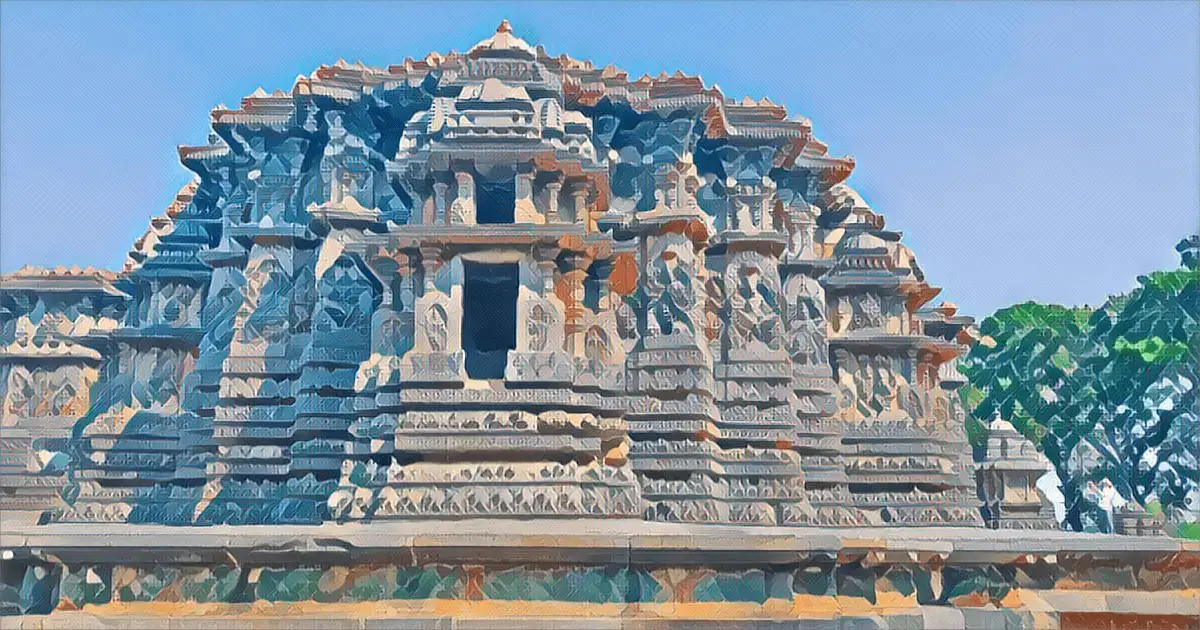
Hulikere Step Well, Halibedu
Hindus turn everything into a temple. A water body, like a lake or a pond is an integral part of a temple. A temple tank is called kalyāṇī. In many Chalukyan and Hoysala temples, the temple kalyāṇī is imagined as an inverted mirror image of the temple itself – as the temple above ground, so the kalyāṇī below. But there are many free standing temple tanks/ step wells which are decorated with many small temples adorning the corners and centers of its steps at many places. Hulikere Step Well is such a temple tank which is a marvel in itself. It is one of the most beautiful and deepest temple tanks in Hoysala architecture.
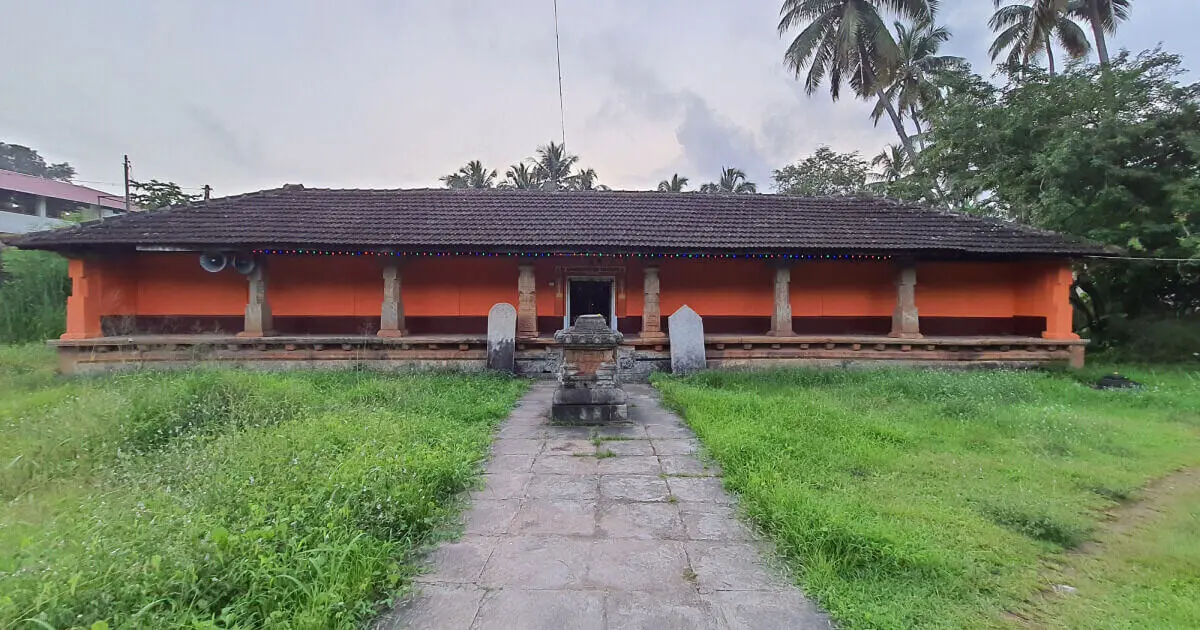
Somnatheshvara, Barkur
This is a temple dedicated to Śiva, belonging to the great Śaiva age which saw many great temples built in this region. The temple is two storeyed and rectangular in shape. The lower storey is built in stone and is beautifully carved in ways particular to this region and also shows similarities to the early Draviḍa architecture of Tamil Nadu which is also a testimony to the Chola past of this Tulu heartland. The upper storey is built with mixed material and is plainer. The roofing of both the storeys is different. There is a free standing Nandi manḍapa. The temple boasts many inscriptions. The special part is the front manḍapa which is very long and rectangular with old stone pillars.
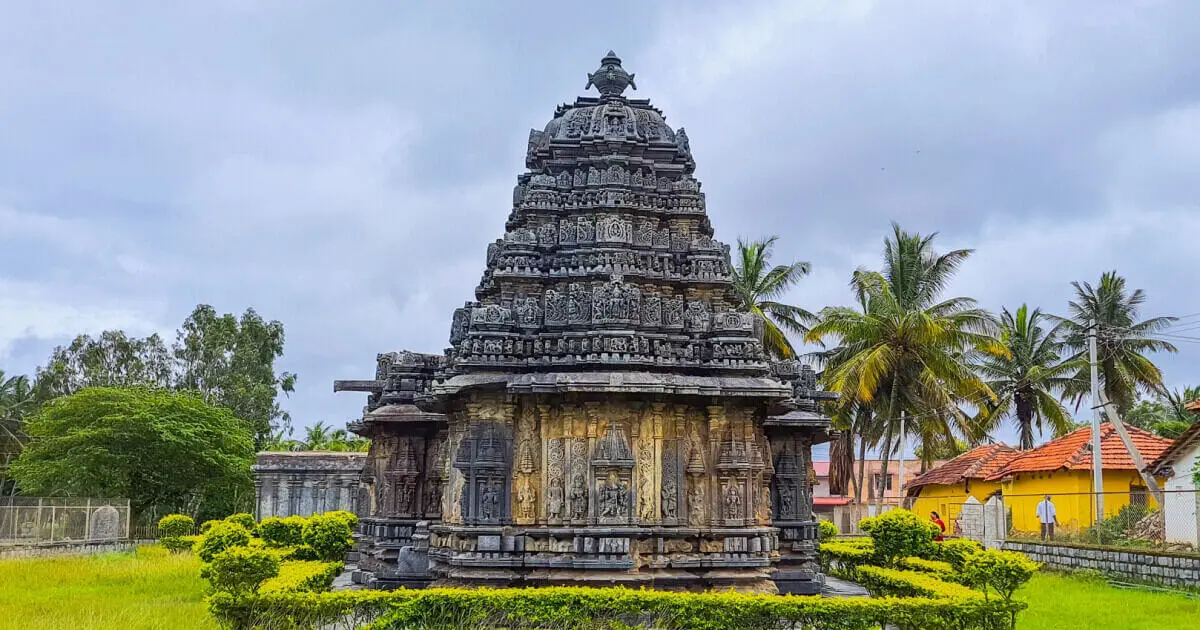
Bucesvara Temple, Koravangala
Around only 15 kms from the city center of Hassan, this temple is located in the midst of a picture-perfect quaint village with coconut trees, lakes on many sides and paddy fields dotted with beautiful terracotta huts. The temple is a dvikūta with the main shrine dedicated to Śiva and another, situated right in front of this one with a common attached manḍapa dedicated to Lord Sūrya. The temple is low and accessible but with one of the most complete Hoysala seals with the king battling a lion displayed at the śikhara of the temple.
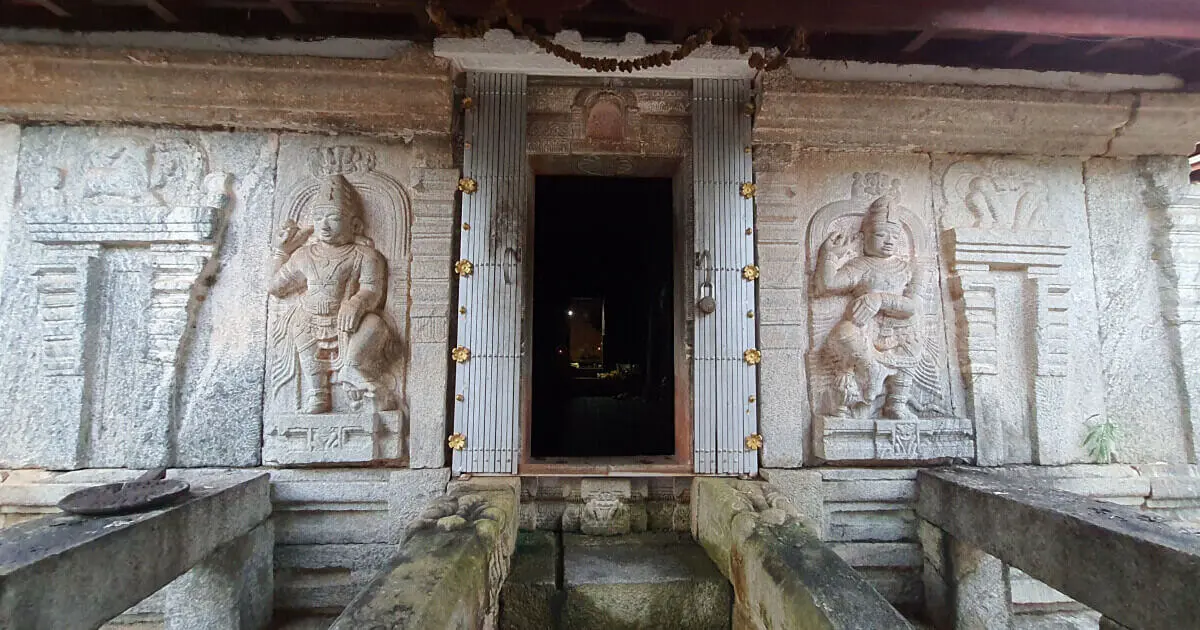
Chowlikere Ganapathi Temple
This temple is situated in an ancient port capital which is now a small town but has a village-like charm as it is surrounded by paddy fields and coconut lined backwaters from every side. This temple was built in the coastal Kanara style, with sloping roofs built of stone slabs and huge prākāras surrounding the inner temples. The architecture is similar to Kerala but has a distinct style of its own. It is said to be built by the Cholas and the deities worshipped here are Mahalingeshwara and Ganapathi. The garbha-gṛhas, two-storeyed, are rectangular fronted by square free standing Nandi manḍapas and with śikharas lined with Mangalore tile roofing, giving them a distinct charm.
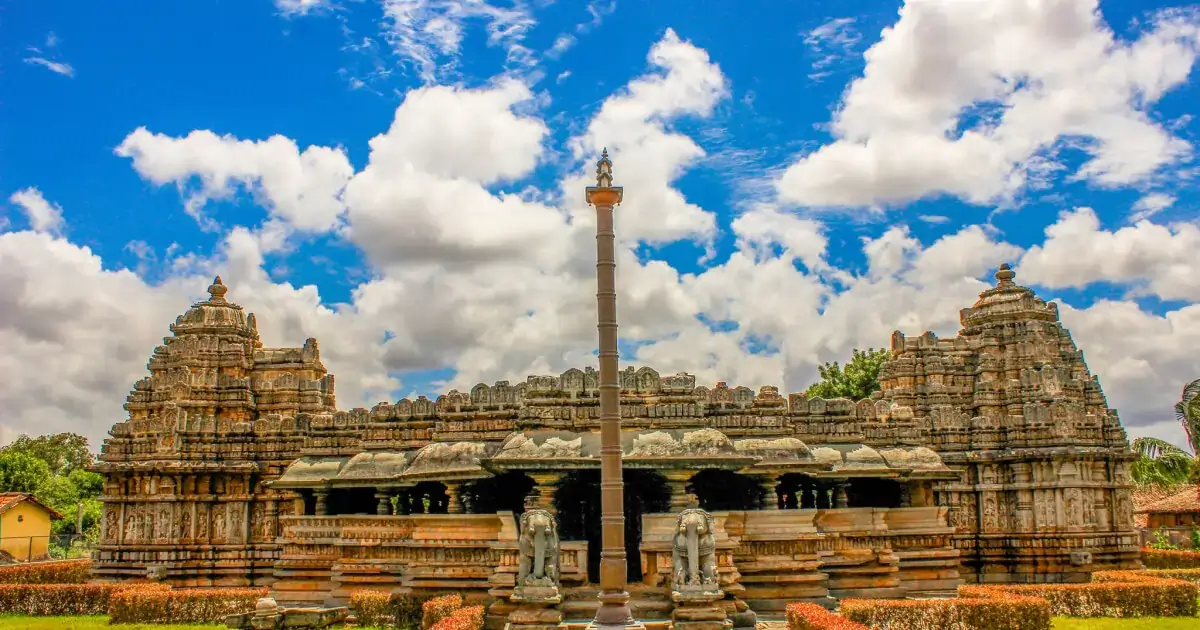
Veera Narayana Temple, Belavadi
Veera Narayana Temple is a detached trikūṭa located in a quaint little village of Belavadi, dedicated to three forms of Viṣnu: Veer Narayana, Yoga Narasimha and Venu Gopala. It is one of a kind because while two of its lateral shrines are connected with a common manḍapa, the third and the central shrine is detached by two smaller open and closed manḍapas, thus creating one of the most peculiar and beautiful facades of all the great Hoysala temples. The original shrine dates back to the early 11th century and the latest to the 13th century. The open manḍapa is the largest of all Hoysala temples with 108 lathe-turned pillars with every pillar unique in its carving.